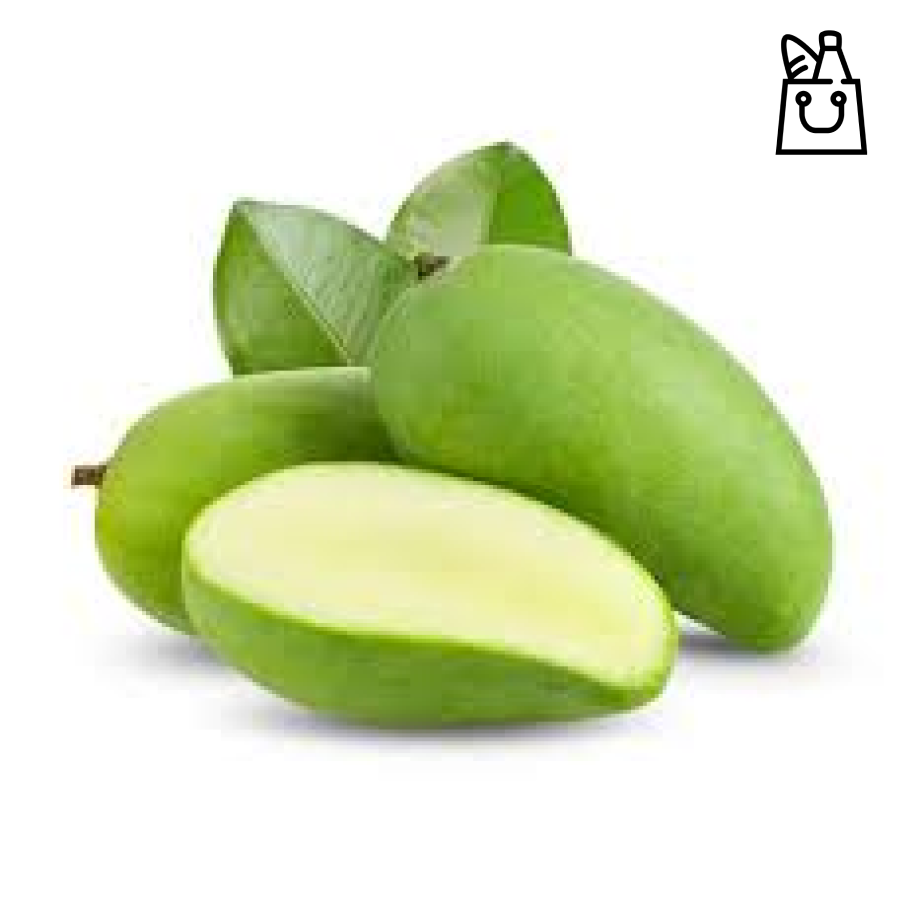- Appearance:
- Green mangoes have a green or greenish-yellow skin, and their color can vary based on the specific variety.
- The skin is typically firmer and more resistant to pressure compared to ripe mangoes.
- Texture:
- The flesh of green mangoes is firm and crisp, with a more fibrous texture compared to the soft and juicy texture of ripe mangoes.
- As the mango ripens, the flesh becomes softer.
- Flavor:
- Green mangoes are notably tart, tangy, and slightly astringent. They lack the sweetness associated with ripe mangoes.
- The flavor can vary between mango varieties, but in general, green mangoes are known for their sharp, refreshing taste.
- Culinary Uses:
- Green mangoes are a popular ingredient in various cuisines, especially in tropical regions.
- They are used in savory dishes, pickles, chutneys, salads, and beverages.
- Green mangoes are a key ingredient in dishes like green mango salad, green mango curry, and raw mango chutney.
- Nutritional Content:
- Like ripe mangoes, green mangoes are a good source of vitamins and minerals, including vitamin C and vitamin A.
- They also provide dietary fiber and antioxidants.
- Cultural Significance:
- Green mangoes are integral to the culinary traditions of many tropical countries. They are often associated with seasonal and festive dishes.
- Green mangoes are also enjoyed in various street food preparations, where their tartness adds a refreshing element.
- Ripening Process:
- Green mangoes continue to ripen after harvesting. As they ripen, the skin may turn yellow, and the flesh softens, becoming sweeter.
Shopping Cart






Reviews
There are no reviews yet.